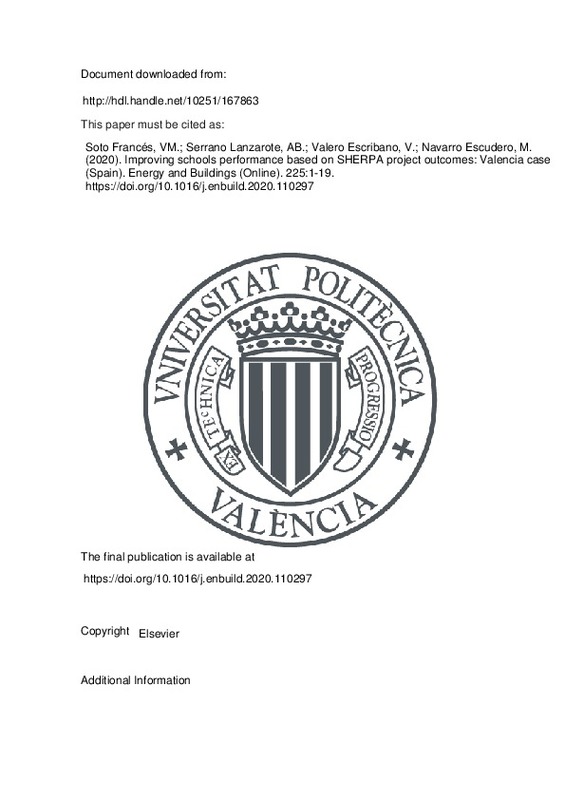Sherpa (shared knowledge for energy renovation in buildings by public administrations), Tech. rep., EU project financed by the Interreg Med Programme (2017–2019).
Epbd, directive 2002/91/eg. on the energy performance of buildings (16 December 2002). URL:http://europa.eu.int/comm/energy/demand/legislation/buildings en.htm.
Attia, S., Eleftheriou, P., Xeni, F., Morlot, R., Ménézo, C., Kostopoulos, V., … Hidalgo-Betanzos, J. M. (2017). Overview and future challenges of nearly zero energy buildings (nZEB) design in Southern Europe. Energy and Buildings, 155, 439-458. doi:10.1016/j.enbuild.2017.09.043
[+]
Sherpa (shared knowledge for energy renovation in buildings by public administrations), Tech. rep., EU project financed by the Interreg Med Programme (2017–2019).
Epbd, directive 2002/91/eg. on the energy performance of buildings (16 December 2002). URL:http://europa.eu.int/comm/energy/demand/legislation/buildings en.htm.
Attia, S., Eleftheriou, P., Xeni, F., Morlot, R., Ménézo, C., Kostopoulos, V., … Hidalgo-Betanzos, J. M. (2017). Overview and future challenges of nearly zero energy buildings (nZEB) design in Southern Europe. Energy and Buildings, 155, 439-458. doi:10.1016/j.enbuild.2017.09.043
F. Causone, S. Carlucci, L. Pagliano, M. Pietrobon, A zero energy concept building for the mediterranean climate, Energy Procedia 62 (2014) 280–288, 6th International Conference on Sustainability in Energy and Buildings, SEB-14. doi: 10.1016/j.egypro.2014.12.389. URL:http://www.sciencedirect.com/science/article/pii/S1876610214034201.
Strategies for a nearly zero-energy building market transition in the european union, Tech. rep., ZEBRA 2020 – Nearly Zero-Energy Building Strategy 2020. European research project (2016). URL:http://zebra2020.eu.
N. Gaitani, L. Cases, E. Mastrapostoli, E. Eliopoulou, Paving the way to nearly zero energy schools in mediterranean region- zemeds project, Energy Procedia 78 (2015) 3348 – 3353, 6th International Building Physics Conference, IBPC 2015. doi: 10.1016/j.egypro.2015.11.749. URL:http://www.sciencedirect.com/science/article/pii/S1876610215024819
Mytafides, C. K., Dimoudi, A., & Zoras, S. (2017). Transformation of a university building into a zero energy building in Mediterranean climate. Energy and Buildings, 155, 98-114. doi:10.1016/j.enbuild.2017.07.083
V. Corrado, I. Ballarini, S. Paduos, L. Tulipano, A new procedure of energy audit and cost analysis for the transformation of a school into a nearly zero-energy building, Energy Procedia 140 (2017) 325–338, beyond NZEB Buildings (AiCARR 50th International Congress, Matera (I), 10–11 May 2017). doi: 10.1016/j.egypro.2017.11.146. URL:http://www.sciencedirect.com/science/article/pii/S1876610217355571
D. Watson, Energy Conservation Through Building Design, McGraw-Hill, New York, 1979.
Rospi, G., Cardinale, N., Intini, F., & Negro, E. (2017). Analysis of the energy performance strategies of school buildings site in the Mediterranean climate: A case study the schools of Matera city. Energy and Buildings, 152, 52-60. doi:10.1016/j.enbuild.2017.07.018
Gil-Baez, M., Padura, Á. B., & Huelva, M. M. (2019). Passive actions in the building envelope to enhance sustainability of schools in a Mediterranean climate. Energy, 167, 144-158. doi:10.1016/j.energy.2018.10.094
López-Ochoa, L. M., Bobadilla-Martínez, D., Las-Heras-Casas, J., & López-González, L. M. (2019). Towards nearly zero-energy educational buildings with the implementation of the Energy Performance of Buildings Directive via energy rehabilitation in cold Mediterranean zones: The case of Spain. Energy Reports, 5, 1488-1508. doi:10.1016/j.egyr.2019.10.008
Meron, N., & Meir, I. A. (2017). Building green schools in Israel. Costs, economic benefits and teacher satisfaction. Energy and Buildings, 154, 12-18. doi:10.1016/j.enbuild.2017.07.044
Documento de bases para la actualización del documento básico db-he, Tech. rep., Ministerio de Fomento. Secretaría de Estado de Infraestructuras, Transporte y Vivienda. Dirección General de Arquitectura, Vivienda y Suelo (2016). URL:https://www.codigotecnico.org/images/stories/pdf/ahorroEnergia/Documento_de_bases_HE2018.pdf
Epbd recast, directive 2010/31/eu on the energy performance of buildings (recast) (19 May 2010).
Energy performance of buildings – overarching epb assessment – part 1: General framework and procedures, Standard ISO 52000–1:2017(en), International Organization for Standardization (2019). URL:https://www.iso.org/home.html.
Principles for nearly zero-energy buildings. paving the way for effective implementation of policy requirements, Tech. rep., Buildings Performance Institute Europe (BPIE) (2011). URL:http://bpie.eu/publication/principles-for-nearly-zero-energy-buildings/
C.J.G. Alfonso, Construcciones escolares en valencia. 1920–1939, Ph.D. thesis, Escuela Técnica Superior De Arquitectura. UPV. Universitat Politècnica de València. (2015).
Energyplus. URL:https://energyplus.net/.
Genera3d. building model compiler. URL:http://www.calculaconatecyr.com.
Pinazo Ojer, J. M., Soto Frances, V. M., Sarabia Escriva, E., & Soto Frances, L. (2015). Thermal response factors to a 2nd order shaping function for the calculation of the 1D heat conduction in a multi-layered slab. International Journal of Heat and Mass Transfer, 88, 579-590. doi:10.1016/j.ijheatmasstransfer.2015.04.110
Mustafaraj, G., Marini, D., Costa, A., & Keane, M. (2014). Model calibration for building energy efficiency simulation. Applied Energy, 130, 72-85. doi:10.1016/j.apenergy.2014.05.019
F. Nicol, M. Humphreys, Derivation of the adaptive equations for thermal comfort in free-running buildings in european standard en15251, Building and Environment 45 (1) (2010) 11–17, international Symposium on the Interaction between Human and Building Environment Special Issue Section. doi: 10.1016/j.buildenv.2008.12.013. URL:http://www.sciencedirect.com/science/article/pii/S036013230800303X.
Energy performance of buildings – ventilation for buildings – part 1: Indoor environmental input parameters for design and assessment of energy performance of buildings addressing indoor air quality, thermal environment, lighting and acoustics – module m1-6, Standard EN 16798-1:2019, European Standards,CEN, Brussels (2019).
Ergonomics of the thermal environment – analytical determination and interpretation of thermal comfort using calculation of the pmv and ppd indices and local thermal comfort criteria–, Standard ISO 7730:2005, International Organization for Standardization (2005). URL:https://www.iso.org/home.html.
Enescu, D. (2017). A review of thermal comfort models and indicators for indoor environments. Renewable and Sustainable Energy Reviews, 79, 1353-1379. doi:10.1016/j.rser.2017.05.175
[-]







![[Cerrado]](/themes/UPV/images/candado.png)


